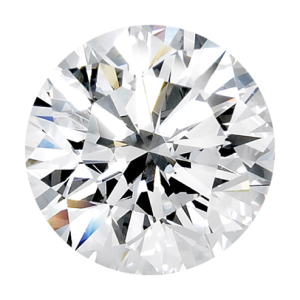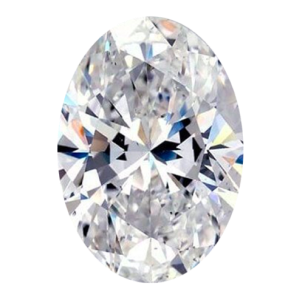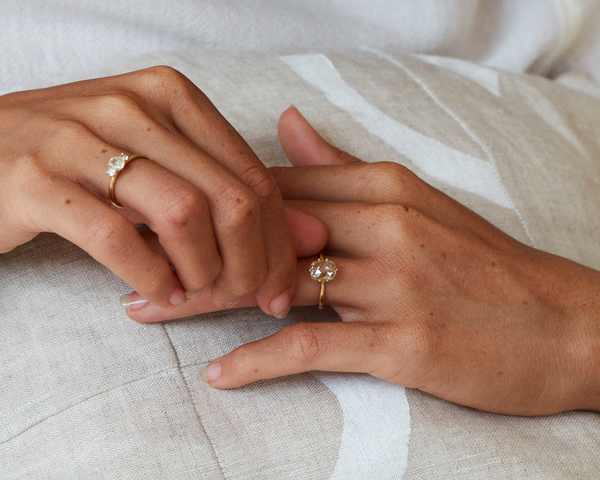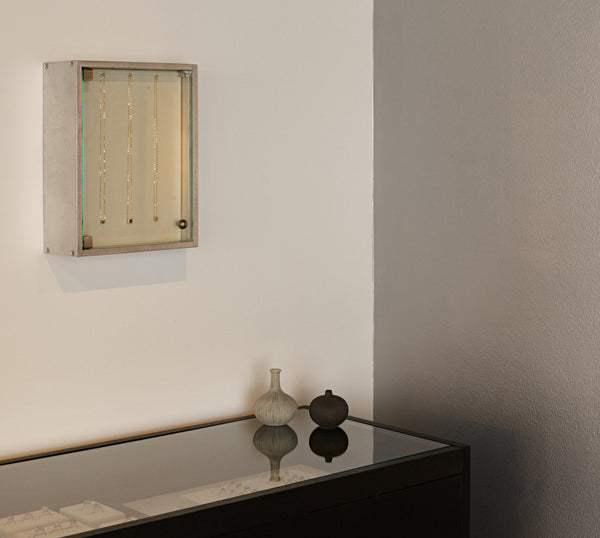Gemstone Guide
There are so many variations of shape and cut out there, so this isn’t all there is to choose from, but we hope this guide can help you distinguish the difference between some of the most popular shapes and cuts.

Round Brilliant Cut

Oval Brilliant Cut

Cushion Cut

Pear Brilliant Cut

Emerald Cut

Princess Cut

Round Rose Cut

Marquise Cut

Asscher Cut
THE 4 C’S
This relates to the 4 ways any gemstone can be assessed by
Carat
Cut
Colour
Clarity

Carat
Contrary to what most people think, this is not the ‘size’ of the stone, but rather a unit of measurement for the stone’s weight. Depending on how the stone has been cut, two stones of the same carat weight may not always face up looking the same size.

Cut
This relates to the way in which a stone has been faceted, not the actual shape of the stone.
For example, you can have a pear shaped rose cut or a pear shaped brilliant cut, both will be pear in shape but they will look completely different due to having been faceted in completely different ways.

Colour
This is probably the most straightforward. In coloured stones this will merely be a description of the stone’s colour.
In white diamonds however, a universal alphabetic grading system exists to distinguish one diamond from another, by separating them into degrees of whiteness.
D-E-F
(colourless)
G-H-I
(near colourless)
J-K-L
(very faint)
M+
(faint yellow)

Clarity
This relates to how clear a stone is, and the way this is measured is by looking at the stone under magnification to assess how many natural inclusions are present and how visible they are. inclusions, slight inclusions, included).
FL - IF - VVS1 - VVS2 - VS1 - VS2 - SI1 - SI2 - I1 - I2 - I3
(flawless, internally flawless, very very slight inclusions, very slight inclusions, slight inclusions, included).
INCLUSIONS
All natural stones whether it’s a diamond or coloured gemstone will possess internal and external features called clarity characteristics. Inclusions specifically relate to internal features of any given stone. These are often small markings or particles and crystals that become trapped or form naturally within the stone’s crystal as it grows.
Read moreColoured Stones
For the longest time, diamonds have been synonymous with the idea of an engagement ring, you would not think of one without the other. This has not always been the case. The tradition of giving and receiving gemstone rings as a token of engagement or a promise and intent to marry was only popularised in the 1800s.
Because mining and production was scarce, diamonds were extremely expensive and reserved only for royalty or nobility. The use of coloured gemstones were much more prevalent during this time. People would often choose a coloured stone based on what they thought would suit the intended wearer, or for any personal sentimental meanings associated with the stone. Sapphires were extremely popular due to their availability in a wide range of hues and for their durability. Comparatively speaking, the demand for diamonds was very low back then.
It was only in 1930 when diamond popularity was at its lowest, that a certain diamond company decided to create what would become one of the most successful advertising campaigns of all time. The slogan they came up with is one which you are probably familiar with even today — ‘Diamonds are forever’. Prominent jewellery houses such as Tiffany’s further popularised this concept, and thus it became mainstream expectation to give a diamond as part of the act of proposing. The expectation to have a diamond in an engagement ring has continued since then until now.
These days, we are finding that people value individuality and uniqueness more than the status quo. Whilst undeniably beautiful, white diamonds tend to always look one way, whereas coloured stones tend to appear more individual and unique in nature. We are seeing a huge increase in those who prefer to have a more interesting main stone in their engagement ring, whether on its own, or accented with smaller side white diamonds.
Below we will highlight some of the coloured stones we often use in our designs and their unique features.
Gemstone Selection

Sapphire

Spinels

Emeralds

Aquamarines

Tourmalines

Opals

Grey & Champagne
Sapphire
Description
Scoring 9 out of 10 on the MOHs scale of hardness, sapphires are second only to diamonds when it comes to hardness. This is why they are so popular as alternative engagement ring stones. Another reason why they are so popular is because they exist in such a huge range of colours.
Colour Grading
Unlike white diamonds, which can be graded against each other easily by comparing which one is whitest, it is impossible to assign grades to colours because you can’t for example compare whether a certain hue of blue is more beautiful than another hue of blue. Colour preference is too subjective to grade. As such, with coloured gemstones, there is no grading for colour but a stone can be graded by its other attributes, such as its carat weight, cutting quality, and clarity.
Inclusions
Just like diamonds, all sapphires will possess internal and external markings left from their time spent growing under immense pressure under Earth. Certain types of inclusions in a sapphire can help gemologists identify what part of the world the sapphire has come from, because the growing conditions will differ in different parts of the world. This is also why certain parts of the world will produce more of one colour of sapphire than other. Teal sapphires for example, can most commonly be found in Australia, Madagascar, and Sri Lanka.
Spinels
Description
A lesser well known mineral, largely due to the mainstream popularity of sapphires and rubies, these massively under represented stones exist in a beautiful range of colour from silvery greys to purple lilac lavender tones and pink to red hues.
Durability
Scoring 8-8.5 out of 10 on the MOHs scale of hardness, they are durable stones suitable for daily wear. At this hardness the only things that could scratch a spinel are things like masonry drill bits, or stones harder than it, such as diamonds or sapphires. Softer materials such as steel, glass or copper will not be able to scratch it.
Origin
Spinels are commonly found in parts of Africa and Asia. Popular sources include Tanzania, Afghanistan, Burma, Sri Lanka and Thailand. Most deposits where sapphires and rubies are found will likely also yield spinels. For centuries before more advanced lab testing became possible, miners would often find it very difficult to distinguish between spinels, sapphires and rubies due to how similar they are in appearance.
Value
Due to its under representation in the market, spinels are a much more affordable option to sapphires. You can get a much larger spinel for the same value as a smaller sapphire. As a result, these stones make for excellent alternative engagement ring stones if you are looking to maximise stone size on a budget.
Emeralds
Description
One of the most well known coloured gemstones, this stone exists only in green. You can get small variances in hue, for example slightly darker deep green hues or the paler almost minty green hues.
Durability
As coveted as emeralds are for their unique colouring, they are actually very tricky stones to work and live with. As a member of the Beryl mineral family, emeralds are 7-7.5 on the MOHs scale of hardness. Whilst this level of hardness would actually be fine for daily wear, they unfortunately also have the added disadvantage of being brittle by nature, making them much more prone to chipping or breakage. We would only recommend emeralds in a ring if you are prepared to committing to a higher maintenance routine. Emeralds are more suited to occasional pieces, or to be worn in earrings or necklaces where the stone is not expected to come into a lot of wear and tear in daily wear.
Origin
Emeralds are prevalent in Colombia, Zambia, Brazil and Russia. Minor deposits are also found in Afghanistan, Pakistan, Australia, and USA.
Inclusions
Unlike other gemstones, emeralds are almost always included. It is extremely rare to find emeralds that are clear and devoid of inclusions. This is a characteristic part of the stone.
Emeralds belong to the beryl mineral family, and their inclusions result from bits of liquids, gas, and other minerals like chromium and vanadium. These inclusions are known as “jardin,” the French word for garden since the inclusions may look like branches or plant roots, but they are also what cause the stone to be that gorgeous green colour.
Value
Since emeralds are so heavily included, about 80-95% of the rough must be cut away to produce a gemstone, thus giving a smaller yield and a bigger price tag. This is why emeralds tend to be more expensive than other coloured stones.
Aquamarines
Description
Just like the name, these stones are known for their beautiful light blue colour. Whilst they do exist in slightly darker or slightly paler hues, they are all just variations of a very distinctive blue.
Durability
Scoring 8 out of 10 on the MOHs scale of hardness, aquamarines are strong stones perfectly suitable for daily wear.
Origin
Brazil is the largest natural source of aquamarines. They can also be found in Madagascar, Malawi, Mozambique and Zambia. Because aquamarines belong in the Beryl mineral family, the same as emeralds, they tend to be found in the same places that emeralds can be found.
Value
The most prized aquamarines combine high clarity with limpid transparency and blue to slightly greenish blue hues.
Tourmalines
Description
Tourmalines have a wide variety of exciting colours; one of the widest colour ranges of any gem. They exist in blue, green, yellow, peach, pink, orange, red and even purple. A lot of the same colours that exist in sapphires will also be available in tourmalines, but at a much more attractive price, so they are perfect if you are looking to maximise stone size with your budget.
Durability
Scoring 7.5 on the MOHs hardness scale, tourmalines are not the hardest stones out there, but they would be fine to withstand daily wear and tear, especially if combined with gentle handling. They are not as included and brittle as emeralds, so with proper care and maintenance, a tourmaline ring can last a lifetime.
Origin
Brazil is the largest natural source for tourmalines. They can also be found in similar deposits to where emeralds and aquamarines are found.
Paraiba Tourmalines
Paraiba tourmalines found exclusively in Brazil, Mozambique and Nigeria have a distinct, vivid aqua blue / minty green colour. These types of tourmalines are extremely rare and valuable as a result. To put their rarity into perspective, only 1 authentic Paraiba tourmaline is mined for every 10,000 diamonds mined.
Opals
Description
Fireworks. Galaxies. Lightning. Opal’s shifting play of kaleidoscopic colours is unlike any other gem. Because no other gem has the multitude of colours contained in an opal, the Romans thought it was the most precious and powerful of all. The Bedouins believed that opals contained lightning and fell from the sky during thunderstorms.
Durability
Registering only 5.5-6.5 on the MOHs scale of hardness, opals are very soft stones prone to becoming scratched, dented or damaged if worn regularly and without special care or handling. To get the most out of an opal, we recommend that opals are used only in earrings, pendants, or in occasional rings which will see light wearing. Setting them in rub over bezel settings rather than prong settings can also help to protect the stone from daily wear and tear.
20% Water
Opal contains up to 20% water trapped in its silica structure. Because of this, these soft stones should not be exposed to contact with water, as it can have an adverse effect on the durability and colour of the stone.
Origin
More than 90% of the opals on the market come from Australia. Smaller deposits can be found in Mexico, Brazil, and Indonesia.
Grey & Champagne
Description
White diamonds have become such a dominant stone in the jewellery market that people often forget or not realise that they do exist in other colours too. ‘Fancy’ diamonds are diamonds which exhibit strong natural colours in vivid vibrancy and high clarity. Examples include vivid canary yellow, pink, green or blue. These kinds of coloured diamonds are incredibly unusual and rare to find in nature, which makes them extremely expensive even in the smallest sizes.
Grey diamonds are diamonds which are grey in colour, usually as a result of having inclusions. Champagne diamonds, like the name suggests, will come in hues of light brown to dark brown.
Some labs assign terms to denote how light / dark a champagne diamond is, and the terms used will vary depending on the lab responsible. In Australia C1-C7 is used to describe champagne diamond hues, with C1-C2 being light champagne colour; C2-C3 light-medium honey colour; C4-C5 medium whisky colour; C6-C7 dark brown cognac colour.
These terms are not used universally so different places may describe champagne colours differently. It is also important to note that these are not grades assigned to the stones, but simply a way of separating the different hues available.
Inclusions
In grey diamonds, natural inclusions are an important part of the stone’s appeal. They can manifest in different ways in the stone. When many black and white crystals are present they may look like trapped pieces of salt and pepper, giving rise to the popularity of the so called ‘Salt and Pepper diamond’.
Inclusions in grey diamonds can sometimes appear more cloudy or hazy and uniform in appearance. These cloud like inclusions tend to give a more opaque or milky appearance in the stone.
Needle inclusions are fine points or lines within the stone, which can sometimes create very interesting patterns.
The terms ‘cloudy’, ‘icy’, ‘stormy’ are merely words used to describe how the inclusions look in any grey diamond. Perception on how these diamonds look vary so much being that it depends on personal taste, so it’s best not to get too hung up on these terms, but they are useful for us to group similar looking grey diamonds together in an effort to best categorise them when speaking with a client.
Champagne diamonds like any stone can also exhibit visible inclusions. The higher the clarity the more expensive the stone would be in general, so lighter clearer champagne diamonds will fetch a higher price than the slightly darker more included champagne diamonds.
Clarity Grading
Because grey diamonds are characteristically included by nature, they are not typically sought after for their clarity. Their main charm and unique selling point is the fact that they have inclusions. Some labs may use I1, I2, I3 as terms to denote levels of inclusions in a grey diamond, with I1 being the least included to I3 being much more included, but in general these stones are selected based on how they look and how unique they are from one another.
Different people will prefer different things in a grey diamond, some people prefer seeing large distinctive inclusions in the stone, while others will prefer grey diamonds that look closer to white diamonds. Unlike white diamonds, there is no manual or handbook that dictates what kind of grey diamond is ‘better’ than another. Only you can decide what appeals most to you.
Durability
Everybody knows that diamonds are among the hardest minerals known to man. Diamonds score 10 on the MOHs scale of hardness. At this hardness, only another diamond can scratch a diamond. Saying that, it is not an indestructible material. Defining gemstones as durable include two distinct traits, hardness and toughness. These terms are not the same and people are often confused between these two.
Hardness describes how resistant to scratching a material is, while toughness relates to its ability to resist being fractured. Toughness means resistance to breaking, chipping or cracking in general, how well a stone holds up under mechanical stress, such as impact from a fall or knocks.
Even though diamond is the hardest mineral, it can still chip and fracture. Diamond is formed in the cubic crystal system and has 4 perfect cleavage directions. A cleavage direction is the weakness plane in the molecular crystal of a diamond. An experienced diamond cutter will look for the cleavage plane to cleave a big diamond into smaller pieces with as little structural weakness as possible.
The toughness rating of diamond is only ‘good’ while Jadeite Jade and Nephrite Jade is graded as ‘exceptional’. If you struck a diamond and a jade against one another, the diamond would cleave and the jade would only bruise.
Origin
Our grey and champagne diamonds are sourced responsibly and ethically from a single mine in Botswana. Our supplier goes direct to the source there, cutting out any middle men, dealing directly with the miners to ensure a fair trade. The faceting and polishing of these diamonds is done in India, before they are delivered to us here in UK.












